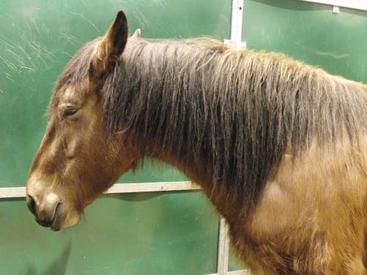
As the breed is not independently recognised, very little is known about its early origins and development. While we know it exists in the Auvergne region of south central France, there is much speculation about how it came to be there; some suggest it descends from ancient Navarrin horses being bred to Thoroughbreds, while others believe it arrived naturally in the region from prehistoric animals.
Popular with the French cavalry at the start of the 19th century, the Auvergne was a strong and dependable war mount that was also well suited to the demands of agriculture as a light draught horse. With the advent of mechanised transport in the latter part of the 20th century, the Auvergne fell from grace and breed numbers diminished.
It is uncertain which horse breeds contributed to the development of the Auvergne, although its slightly oriental look lends itself to Friesian and Barbary influence. Today the breed remains rare outside its homeland and is a popular choice for horse meat.
Sturdy and well conformed, the Auvergne is observed in colours of seal brown and bay. The average height is 14 hands although smaller and larger examples are seen.
During the 17th century, the bloodline was separated into two different strains – the war horse, influenced by Anglo-Arab and Thoroughbred blood, and the hardier farm horse.
Do you own a Auvergne? Let others know what they're like!
Related products
Advantage 80 Spot On Flea Control Large Cats and Rabbits
from £12.95
Advantage 40 Spot On Flea Control Cats, Small Dogs and Rabbits
from £12.95
Advantage 100 Spot On Flea Control Medium Dog
from £12.95
Advantage 250 Spot On Flea Control Large Dog
from £12.95
Drontal Tasty Bone Wormer Tablets for Small & Medium Dogs (2 to 20kg)
from £2.15
FRONTLINE Plus Flea & Tick Treatment Dogs & Cats
from £17.49
TermaWorm™ Tablets for Cats & Dogs
from £1.59
Drontal Tasty Bone XL Wormer Tablets for Large Dogs (Over 20kg)
from £6.39